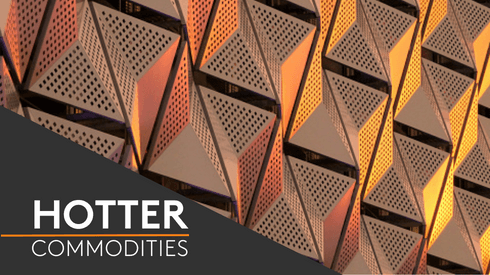After last year was marked by dwindling stock levels across the board, the first few months of 2018 have seen a reversal – with companies putting more metal back into LME-approved warehouses.
“The amount of deliveries we have seen is a huge, and welcome, change to how things were at the end of the year. Especially for aluminium where we have seen lots of metal come back into the warehouses,” a warehousing source added.
In the year to date, total aluminium stocks have increased by 18%. Large deliveries into LME-listed warehouses across Asia began in February, and since then stocks have increased by over 200,000 tonnes.
This compares with 2017 when on-warrant aluminium stock levels fell to their lowest since 2008.
But it is not just aluminium that has seen a shock increase in stocks with some market participants saying there has been a change in attitudes towards storing metal in LME-listed warehouses.
“Over the last few months we have seen more metal coming in and for each one there is not always a specific explanation. But it seems now people are happier to put their metal in the warehouses,” a trader said.
Last year, industry sources posed questions on the attractiveness of LME warehousing, with some predicting stock levels would not improve for the foreseeable future.
But so far in 2018, traders seem to be happy to deliver metal onto the exchange and total LME base metal stocks have risen by 14% since December.
“There now seems to be a benefit to some to deliver metal onto the exchange again. For a long time there was no benefit,” a warehousing source added.
Zinc inventory has surged in New Orleans so far this year – including a 77,275 tonne delivery on March 5, the largest single zinc delivery since 2013. Stocks had fallen 57% during 2017.
“It has not been the same usual games – the zinc stocks were not all canceled straight away. Bits and bobs have been canceled but a large bulk of material is staying,” a second trader said.
“This is different. We are seeing stocks on the LME rise for the first time in a while and this could be hugely important,” he added.
Previously, when large levels were delivered into the exchange they were canceled straight away – this usually meant the metal was already tied up in a pre-arranged deal, such as a rent deal.
But metal staying on-exchange suggests a different attitude to warehousing – with some now considering it valuable to keep their metal on exchange.
It has been a similar story for copper with on-warrant LME stocks rising 59% in 2018 so far – now sitting at 321,450 tonnes, following over 100,000 tonnes delivered in the space of a week in January.
Could LME review reforms?
As of March 19, total LME base metals stocks are at 2,275,421 tonnes, compared with 1,994,075 tonnes at the end of December 2017.
But the main question is whether the recent trend of delivering onto the exchange can be sustained for a prolonged period and long enough to make LME warehousing competitive again.
“We could see all the metal canceled again over the next few weeks – and we have already seen a series of cancelations – so I think it is still a case of wait and see,” a third trader said.
“There are a lot of people still calling for the exchange to relax its rules, and they should do it soon,” he added.
Market participants have been calling the LME to consider relaxing its warehouse initiatives, such as Load-In/Load-out (LILO) and queue-based rent capping (QBRC), for a number of months to encourage stockholders to deliver metal back to the exchange.
With recent deliveries onto the LME showing the sheer volume of metal eligible for delivery onto the exchange, the industry is starting to wonder whether the LME will finally look at adapting its warehousing reform.
Last year, the exchange decided against adapting the rules in its strategic pathway document – noting that “the market will need to accept the ongoing applicability of the LILO and QBRC rules.”





